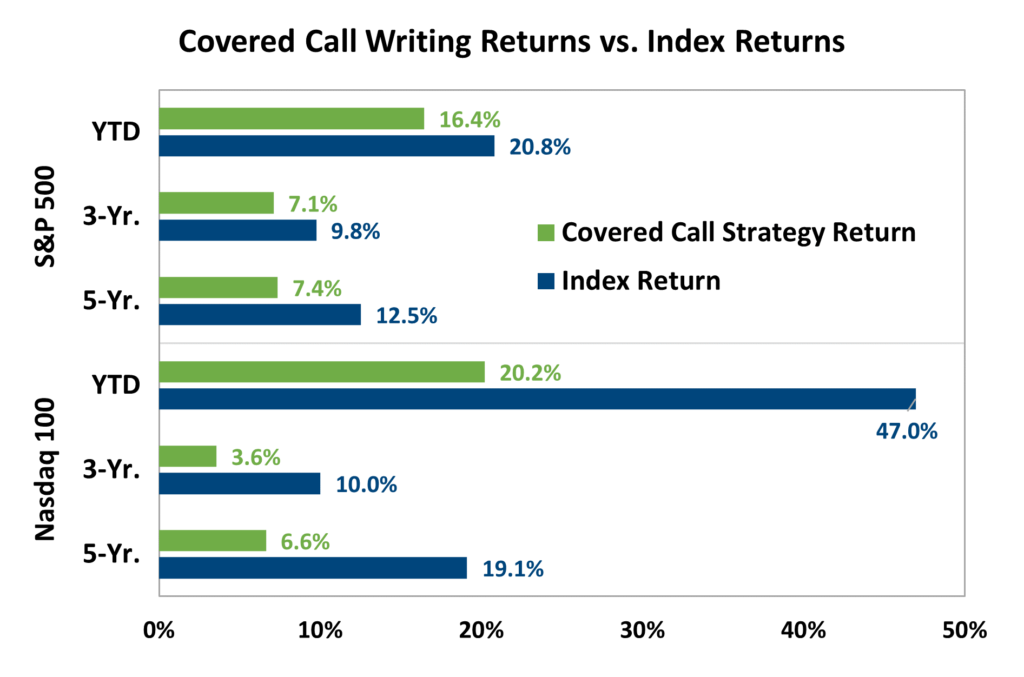
The promise of extra income is one of the most persuasive arguments to compel investors to consider a different investment. Demand for income, along with tighter options spreads, lower commissions, and the introduction of zero-days-till-expiration options, have propelled explosive growth in options trading. In 2019, there were 5.8 billion equity options contracts traded in North America. By 2022, the market had more than doubled to 12.2 billion contracts.1.
The most popular options income strategy is the buy-write, also known as the covered call, strategy. In this strategy, the investor owns an equity position and then sells, or “writes,” out-of-the money call options against their position. The covered call writer receives income in the form of options premium, but gives up most of their equity upside potential if stocks have strong appreciation. This strategy has become a popular ETF offering, with many ETF launches and positive investors flows.
According to a recent paper that examined 25-years of data, most investors who pursued a covered call strategy would have had better total returns had they simply maintained their long equity exposure without selling options.2. We found similar results when comparing trailing index returns with the total returns of indexed covered call strategies over the last 5 years (see chart).
Options income strategies have the allure of increasing income, but in most cases have resulted in lower total returns. This was particularly true last month, when the S&P 500 gained 9.1%, but the typical buy write strategy only gained 5.2%. Today’s higher interest rates are providing very compelling, straightforward, income generating opportunities without the need to sacrifice equity portfolio upside.
1. FIA.org
2. Roni Israelov & David Ndong, When Generating Income Undermines Investment Returns, 10/26/2023